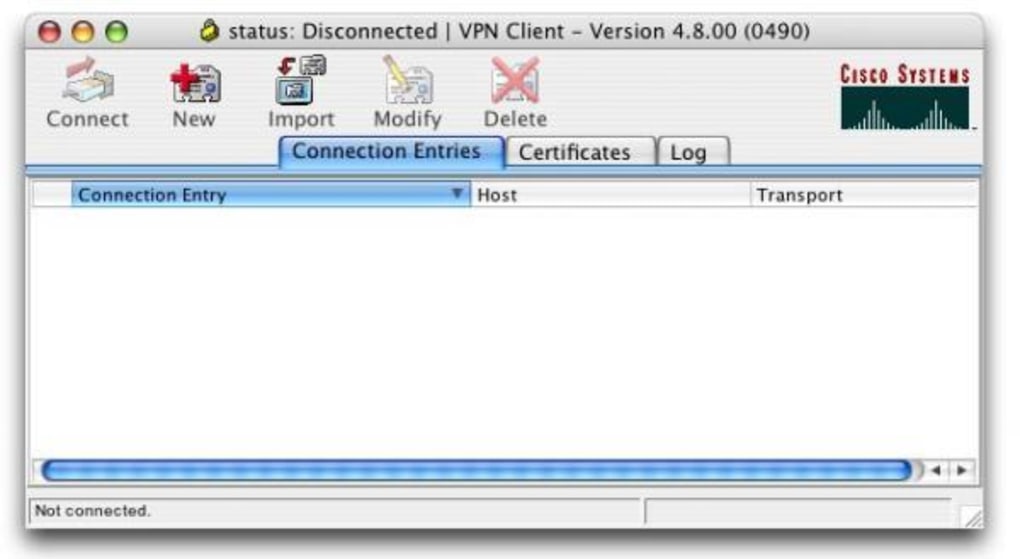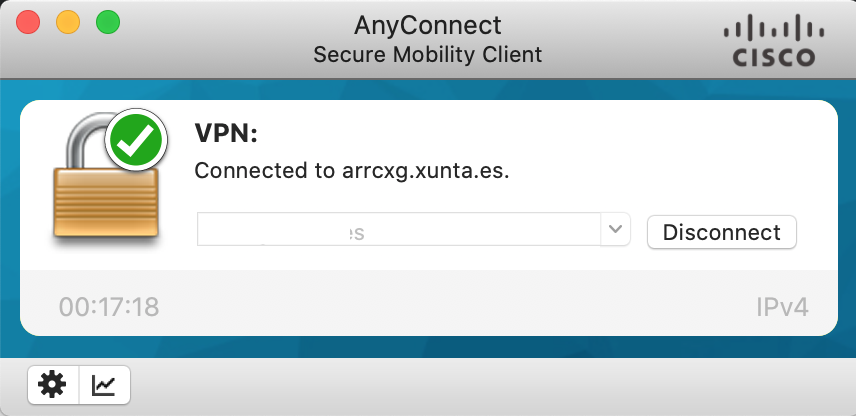Download Cisco Vpn Client For Mac
- Cisco Anyconnect Secure Mobility Client Free Download
- How To Download Cisco Vpn Client For Mac
- Download Cisco Vpn Client For Mac Os X 10.6.8
- Cisco Vpn For Mac Download
- Cisco Vpn Client 5.0.07 Download For Mac
The VPN package is greyed out (as shown in the screen capture below) due to incomplete/unclean installation of VPN client.
Home » Frequently Asked Questions » Remote Access (HKUVPN) » I cannot install Cisco Anyconnect VPN on Mac OS X as the VPN package is greyed out during installation. What should I do? If you would like to perform the web installation method click here to download the install guide for the Cisco AnyConnect Secure Mobility VPN client. Make sure you follow each of the steps as described in the installation instructions. You must connect to the EP Cloud through a secure tunnel using the Cisco AnyConnect Secure Mobility VPN Client. Before installing, uninstall any instance of the Cisco VPN client (or Cisco AnyConnect) on your computer. If your operating system is automatically detected, proceed with the automatic installation. If your operating system is not automatically detected, click the 'AnyConnect VPN” download link. After the download is complete, run the installer.
Cisco Anyconnect Secure Mobility Client Free Download
To resolve the issue, please follow the steps below to remove the Cisco Anyconnect VPN client from your Mac OS X and re-install it again.

Note: If your Mac user account has no password (a blank password), you must give it a password before proceeding the procedures below. Please refer to Apple support site https://support.apple.com/en-hk/HT202860#knowpassword to change your password.

- From Finder menu, choose Go and then click Utilities.
- Click Terminal.app App.
- Type the following at the command prompt, press Enter and input the password of your Mac user account.
sudo pkgutil --forget com.cisco.pkg.anyconnect.vpn

How To Download Cisco Vpn Client For Mac
Cisco AnyConnect is the recommended VPN client for Mac. The built-in VPN client for Mac is another option but is more likely to suffer from disconnects.
Overview
Stanford's VPN allows you to connect to Stanford's network as if you were on campus, making access to restricted services possible. To connect to the VPN from your Mac you need to install the Cisco AnyConnect VPN client.
Two types of VPN are available:
- Default Stanford (split-tunnel). When using Stanford's VPN from home, we generally recommend using the Default Stanford split-tunnel VPN. This routes and encrypts all traffic going to Stanford sites and systems through the Stanford network as if you were on campus. All non-Stanford traffic proceeds to its destination directly.
- Full Traffic (non-split-tunnel). This encrypts all internet traffic from your computer but may inadvertently block you from using resources on your local network, such as a networked printer at home. If you are traveling or using wi-fi in an untrusted location like a coffee shop or hotel, you may wish to encrypt all of your internet traffic through the Full Traffic non-split-tunnel VPN to provide an additional layer of security.
You can select the type of VPN you want to use each time you connect.
Install the VPN client
- Download the Cisco AnyConnect installer for Mac.
- Double-click the InstallAnyConnect.pkg file to start the Cisco AnyConnect Installer wizard.
- When the Welcome window displays, click Continue.
- Select your hard drive as the destination where you want to install Cisco AnyConnect and then click Continue.
- Click Install to perform a standard installation of the software.
- At the prompt, enter your administrator account password for the Mac and click Install Software.
- When the software has finished installing, click Close.
Download Cisco Vpn Client For Mac Os X 10.6.8

Connect to the Stanford VPN
- To launch the VPN client, open your Applications folder and navigate to Cisco > Cisco AnyConnect Secure Mobility Client.app.
- When prompted for a VPN, enter su-vpn.stanford.edu and then click Connect.
- Enter the following information and then click OK:
- Group: select Default Stanford split- tunnel (non-Stanford traffic flows normally on an unencrypted internet connection) or Full Traffic non-split-tunnel (all internet traffic flows through the VPN connection)
- Username: your SUNet ID
- Password: your SUNet ID password
- Next, the prompt for two-step authentication displays.
- Enter a passcode or enter the number that corresponds to another option(in this example, enter 1 to authenticate using Duo Push on an iPad). You may have to scroll down the list to see all of your options. Then click Continue.
- If your only registered authentication method is printed list, hardware token, or Google Authenticator, the menu does not display. Enter a passcode in the Answer field and click Continue.
- Click Accept to connect to the Stanford Public VPN service.
- Once the VPN connection is established, the Cisco AnyConnect icon with a small lock appears in the dock.
Cisco Vpn For Mac Download
Disconnect from the Stanford VPN
Cisco Vpn Client 5.0.07 Download For Mac
- Click the Cisco AnyConnect icon with a small lock.
- At the prompt, click Disconnect.

